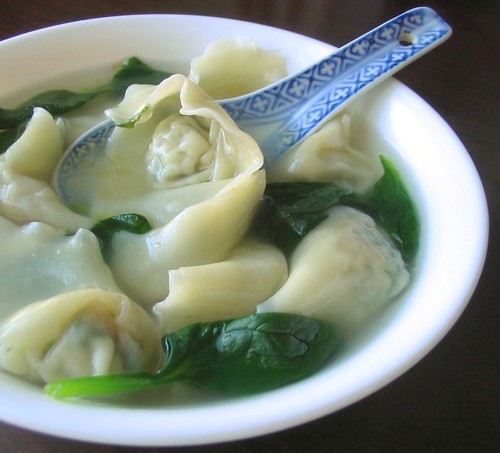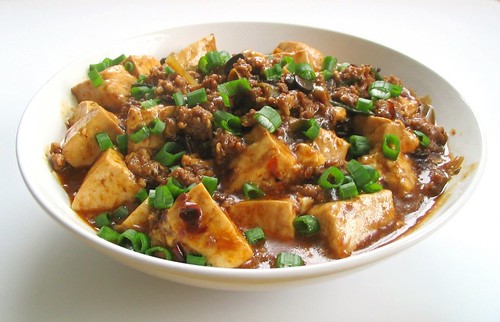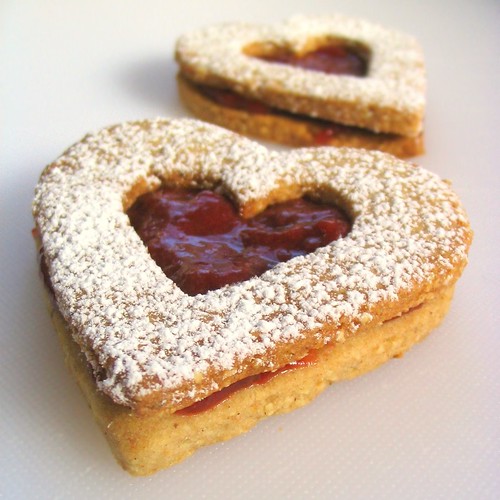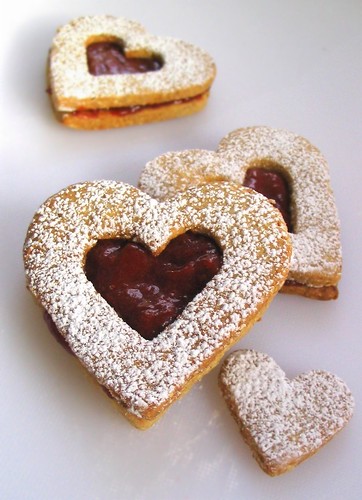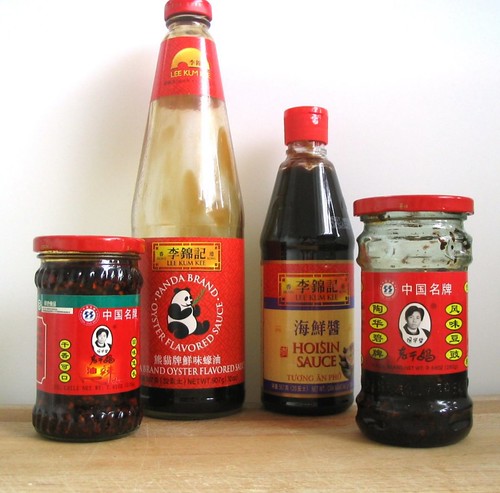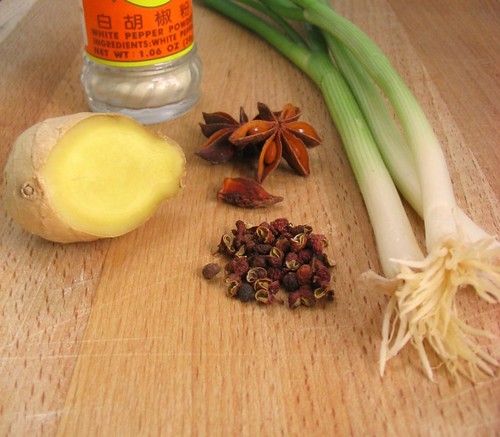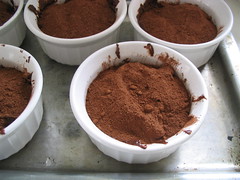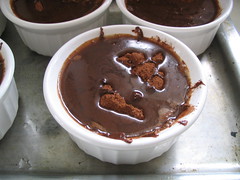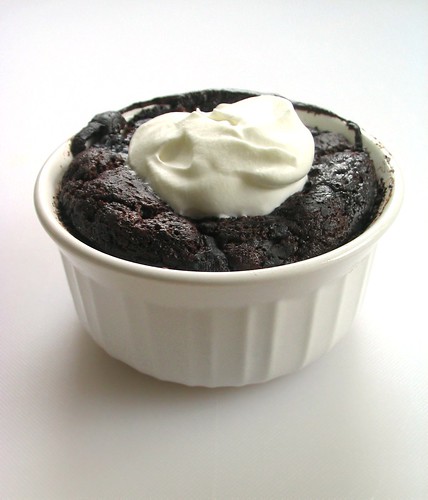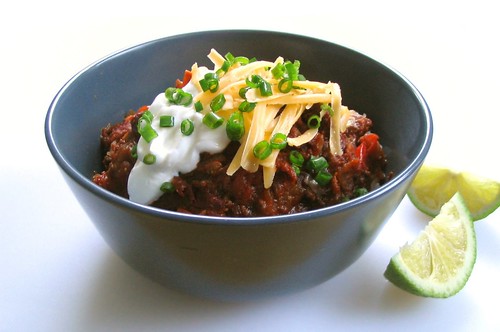
Dumpling making was a frequent weekend family activity when I was young. First, my dad would mix the filling, adding a splash of this and and a dash of that. Then we would start the assembly line. My brother's job was to separate any wrappers that were stuck together, lay them out, and, the most important part, place them flour side down so when we pick up the wrappers, the flour side would end up on the outside of the dumplings. My mom and I would wrap the dumplings, using up the wrappers as fast as my brother could separate them. Dad would help with the wrapping sometimes but his other job besides making the filling was boiling the dumplings. Of course, my mom would always get on his case about how he would boil them too long.
The way Chinese people boil dumplings has always puzzled me. Here’s how my family did it:
1. Bring a large pot of water up to a boil
2. Add your dumplings, bring it up to a boil again
3. Add a cup of cold water, boil again,
4. Add another cup of cold water, and after it comes up to a boil again, they are ready to be served.
Every Chinese person I’ve asked about this says the same thing: add water, boil, add water, boil. Even all of my Chinese cookbooks say to boil this way. Nowhere does it specify how much water you start out with or how much is a “cup” of cold water, sometimes my dad used a mug, sometimes a bowl. Because I'm a food science nerd, I wonder, what is the science behind the principle of adding the cold water? I could BS something and say that the cold water solidifies the gluten in the wrappers making the dumplings chewier but honestly, I don’t think a cupful of cold tap water in a stockpot of boiling hot water is going to make a difference. What's the difference is between doing this versus a steady gentle simmer? Anyone want to hazard a guess? Anyways, since I like to be precise, or at least try to, I gave time frames for boiling, steaming, and panfrying the dumplings. You can always cut open a sacrificial dumpling to check if the inside is cooked through.
My family always used storebought wrappers for their convenience so I thought these were the way to go. The last time I tried to make homemade wrappers, I ended up with some painful and diastrous results (I won’t go into details). So I went back to buying my wrappers, thinking that they would solve my problems. But... they don’t! Now I find that the storebought wrappers are too dry and rigid. Having to wet the wrappers with water is an extra step and it's especially annoying when the wrappers don't seal properly. Homemade wrappers definitely taste better and have a much better chew but is it worth the trouble? I’ll have to try again.
With so many possible fillings and three different ways of cooking them, I'll never get tired of making and eating dumplings. Dumpling or jiao zi are filled with a combination of protein and veggie. They are usually filled with ground pork because that is the most common meat eaten in China, but they can also be filled with shrimp, beef, pressed tofu, or even scrambled egg. There's even greater variety of vegetables you can use: napa cabbage, salted mustard greens, Chinese chives, etc. Then you can either boil the dumplings (shui jiao) or steam them (zheng jiao) or panfry them (guo tie/potstickers).
Pork, Shrimp, and Mushroom Potstickers
1 lb ground pork
1/2 lb shrimp, finely chopped or briefly pulsed in a food processor
1/2 C chopped shiitake mushrooms
1 tsp grated ginger
2 Tbsp Shao Hsing rice wine
2 Tbsp soy sauce
2 tsp sesame oil
1/4 tsp white pepper
1/2 tsp sugar
1 egg
1 Tbsp cornstarch
1 pack of potsticker wrappers or fresh wrappers
And a bowl of water
or
Fresh potsticker wrappers
3 C all purpose flour
2/3 C boiling water
1/3 C cold water
1 tsp salt
Makes about 32 to 36 potstickers
Make the wrapper (optional)
Mix flour, salt, and hot water. Stir together with a spoon or pair of chopsticks until the dough comes together. Add the cold water and stir. Knead until smooth. The dough should not be sticky. Let the dough rest at least 30 minutes. You can make the filling at this time.
Divide the dough in 4 pieces and keep 3 pieces under cover so it doesn’t dry out. Take one portion and roll it out into a long snake. Cut off a piece of the snake to and roll it into a 3 in wrapper. Ideally it should be thinner around the edges and thicker in the middle.
Repeat for the other half of the dough. Keep the dough covered when you work with out to prevent it from drying out.
Make the filling
Mix all of the ingredients for the filling together in a bowl.
If you're using storebought wrappers, make sure you place the filling on the side with less flour. Place a tablespoon of the filling on a wrapper. You can pleat the edges or fold them in half. If I’m boiling them, I get lazy and fold them in half. If I’m panfrying them for potstickers, then I like to pleat them so they can sit neatly on their flat bottoms in the pan. When using storebought wrappers, make sure to have a bowl of water to moisten the entire perimeter of the wrapper in order to tightly seal the dumpling. You won’t need the water for fresh wrappers since the dough is soft enough to seal together nicely. If you’re looking for how to pleat the dumplings, the very best folding guide I've come across is Jen’s dumpling guide. I didn’t even bother taking my own pictures especially with my dirty hands because Jen’s guide is an A+. There was a good one on Epicurious a while back but I can’t find it anymore. Place the wrapped potstickers on a lightly floured tray and keep them covered until you are ready to cook them.
Boil:
Bring a large pot of water to a boil. Add the dumplings and stir so they don’t stick to each other or to the bottom of the pan. Cover and lower the heat to a simmer. Simmer for 7 – 9 minutes, or until the filling is cooked through. Frozen dumplings will take an additional 1 – 2 minutes. Drain and serve with dipping sauce.
Steam:
Bring the water in the steamer up to a boil. Place some cabbage leaves or a layer of cheesecloth in the steamer. Arrange the dumplings so they are not touching. When the water in the steamer comes to a boil, steam the dumplings for 10 - 12 minutes. Frozen dumplings will take an additional 1 – 2 minutes.
Pan fry:
Heat 1 tablespoon of oil in a nonstick skillet over medium high heat. Arrange the dumplings in a circular ring around the pan and squeeze some into the middle, making sure that they do not touch. Pan fry until the bottoms are light golden, about 1 minute. Add 1/2 C of water and immediately cover. Turn the heat down to low or medium low and steam the dumplings in the skillet for 10 minutes (12 minutes for frozen). After 10 minutes, remove the lid and turn the heat up to medium high to evaporate any remaining water and crisp the bottoms, about 2 – 3 more minutes. Place a plate over the potstickers and invert the pan to serve the potstickers crispy side up.
Freeze:
Freeze the dumplings on a lightly floured tray, making sure they are not touching. When they are frozen solid, transfer them to a freezer bag.
Dipping sauce
2 Tbsp soy sauce
1 Tbsp rice vinegar
1/4 tsp sugar
1/4 tsp toasted sesame oil
Thinly sliced scallions (optional)
Minced ginger (optional)
Minced garlic (optional)
Chili oil or chili sauce/paste (optional)
Mix everything in a bowl and serve with dumplings. Double if needed.

